Optoma has always been a highly respected name within the projector industry. Known for their robust lineup that caters to a wide range of audiences, from business professionals to home cinema enthusiasts, the brand has consistently delivered products with excellent performance and value. Their latest offering, the Optoma HD28HDR, is an embodiment of this philosophy.
As a mid-range projector, it aims to satisfy customers who seek outstanding performance without having to pay a premium price by bridging the gap between entry-level and high-end projectors.
It builds upon the strengths of its predecessor, the HD27HDR, offering enhancements such as improved contrast ratio and HDR capabilities, while also challenging contemporary rivals such as the Epson Home Cinema 2250 and the BenQ HT2050A.
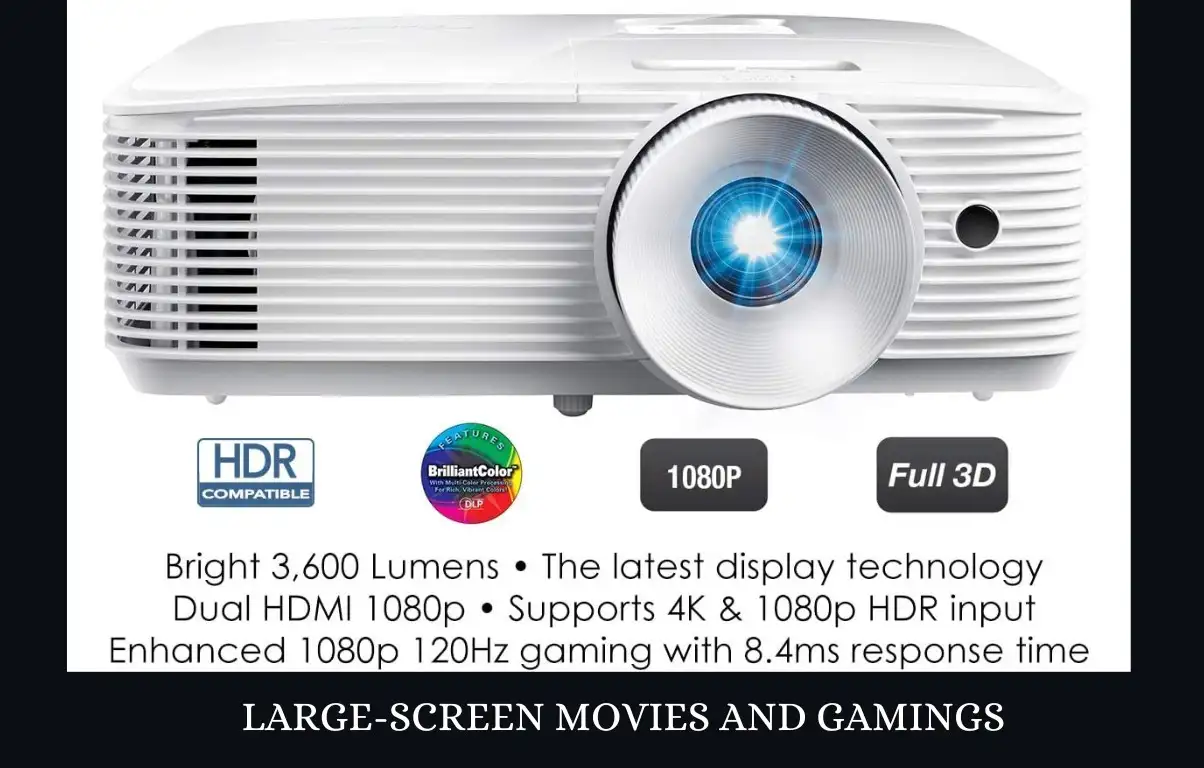
Technical Specifications
The Optoma HD28HDR is packed with impressive specifications that not only demonstrate its ability to perform but also position it as a strong contender in the competitive landscape of mid-range projectors.
Let’s dissect the technical aspects to understand what makes this projector tick:
Resolution: It has 1920×1080 pixels of native resolution, translating to a Full HD (1080p) viewing experience. This high resolution ensures that the projected image is sharp, clear, and full of detail, making it suitable for movies, presentations, and gaming alike.
Contrast Ratio: This projector boasts an impressive contrast ratio of 50,000:1. The difference between the lightest light and the darkest dark a projector can produce is called the Contrast ratio; hence a higher numinky blacks and bright, pure whites, creating an image with impressive depth and detail.
Brightness: With a luminosity of 3600 ANSI lumens, the HD28HDR offers a bright image that remains clear and vibrant even in rooms with a moderate level of ambient light. Lumens are the unit of measurement used to quantify the amount of light a projector can produce, and a higher lumen count equates to a brighter image.
Lamp Life: The longevity of a projector’s lamp is a crucial factor for maintenance and the overall cost of ownership. This projector excels in this department with up to 15,000 lamp life hours in Dynamic mode. This means the projector can run for several years under normal usage without requiring a lamp replacement.
What truly sets the HD28HDR apart is its HDR10 compatibility, which we’ll discuss more in-depth later.
4k Capability of Optoma HD28HDR
While the Optoma HD28HDR has a native resolution of Full HD (1080p), it does not natively support 4K resolution. However, the projector is capable of accepting and displaying 4K input thanks to a technology known as pixel shifting.
This technology effectively multiplies the pixels produced by the DLP chip, simulating a 4K UHD (3840 x 2160 pixels) viewing experience. Pixel shifting allows for increased detail and sharpness compared to standard 1080p content, but it should be noted that the quality will not match that of a native 4K projector.
Refresh Rate
In terms of refresh rate, the HD28HDR boasts an impressive rate of up to 120Hz in Enhanced Gaming Mode. The refresh rate is the number of times the screen updates with new images each second.
A higher refresh rate translates to smoother, more fluid motion, making it particularly beneficial for fast-paced action scenes in movies and for gaming. The 120Hz refresh rate is quite exceptional in the projector landscape, particularly among projectors in the HD28HDR’s price bracket.
When used with a compatible gaming console or PC, the Enhanced Gaming Mode also reduces input lag to as low as 8.4ms, ensuring a responsive and immersive gaming experience. Its high refresh rate and low input latency make it an appealing choice for gamers looking for a large-screen, high-definition gaming experience.
Performance Evaluation of the Optoma HD28HDR Projector
The Optoma HD28HDR’s performance is a testimony to its design philosophy of offering robust features and quality experience at a reasonable price point.
Let’s delve into how it performs under varying conditions and with different media types:
Performance in Different Lighting Conditions
One of the key strengths of the HD28HDR is its high brightness output of 3600 ANSI lumens. This substantial lumen count allows the projector to offer clear, vibrant images even in rooms with a moderate level of ambient light.
Of course, like any projector, it will perform best in dark or low-light conditions, where its impressive contrast ratio can really shine by rendering deep blacks and brilliant whites. Nevertheless, the high brightness output provides a degree of flexibility that is appreciated in many home or office setups.
Handling Different Types of Media
The HD28HDR excels in displaying various types of media. For cinematic content, Its compatibility shines, providing enhanced color depth, brighter whites, and darker blacks, resulting in an immersive movie-watching experience. Its 50,000:1 contrast ratio and full HD resolution ensure crisp and detailed images that movie enthusiasts will appreciate.
For gaming, the HD28HDR goes a step further with its Enhanced Gaming Mode. By turning on this function, the refresh rate is raised to 120Hz and the reaction time is cut to as little as 8.4ms. These specifications are crucial for gamers as they allow for smooth, fast-paced action and minimal input lag, providing a more engaging and immersive gaming experience.
In a business or academic setting, its full HD resolution ensures that presentations are crisp and easy to read, while its robust brightness ensures that visuals remain clear even in well-lit conference rooms or lecture halls.
Processing Lag
Projectors are sometimes criticized for their processing lag, particularly during fast-paced action sequences or while gaming. However, the Optoma HD28HDR counters this with its aforementioned Enhanced Gaming Mode.
With a response time of just 8.4ms at a 120Hz refresh rate, this projector ensures a smooth and virtually lag-free experience. This low latency, combined with the high refresh rate, makes this projector an excellent option for gamers and for fast-action media content.
Understanding Its HDR Capabilities
High Dynamic Range (HDR) technology has become a game-changer in the home cinema landscape, providing enhanced contrast and a wider color gamut for a truly immersive viewing experience. The HD28HDR comes equipped with HDR10 compatibility, one of the most commonly adopted HDR standards. Let’s assess how it performs in this aspect:
HDR Performance
When fed HDR content, it uses HDR10 to optimize its output, enhancing the brightness and color to produce a more vibrant and realistic image. This is particularly noticeable in scenes with a high degree of contrast, such as a bright sky against a dark landscape, where the HDR allows for a greater range of visible detail.
The HDR mode also expands the color palette, producing more accurate and saturated colors, especially in the brighter elements of the scene.
The performance of HDR on the HD28HDR is tied to its native contrast ratio and brightness. With a 50,000:1 contrast ratio and 3600 ANSI lumens brightness, it performs admirably, producing bright, punchy colors and deep, detailed blacks.
Comparison with Other HDR Projectors
Compared to other HDR projectors within the same price range, the Optoma HD28HDR holds its own. While some models might offer slightly higher brightness or contrast, it offers a well-balanced performance with its combination of 1080p resolution, HDR10 support also has 4k capabilities and a high contrast ratio.
While projectors with native 4K resolution may showcase HDR content more strikingly, they also come at a significantly higher cost. The HD28HDR strikes a commendable balance between cost and performance, providing HDR10 support in a full HD, budget-friendly projector.
3D Capabilities of the Optoma HD28HDR Projector
3D technology adds an extra dimension to the viewing experience, bringing content to life in an engaging and immersive way. This projector provides robust support for 3D content, offering viewers the chance to enjoy a theater-like 3D experience at home.
3D Performance
Almost any 3D source, including 3D Blu-ray players, 3D broadcasts, and the most recent consoles, can display actual 3D content on this projector. The full 3D 1080p support ensures that the projected image maintains high-quality resolution even in 3D mode.
Moreover, it employs a high refresh rate of up to 120Hz, which significantly enhances the 3D viewing experience by ensuring smooth and flicker-free images. This high refresh rate also reduces the cross-talk, the interference between left and right eye images, which is a common problem in inferior 3D systems.
To fully enjoy the 3D capabilities, viewers will require a set of DLP-Link 3D glasses. It’s important to note that these glasses are usually sold separately.
Comparison with Other 3D Projectors
In comparison to other projectors in its price range, the HD28HDR stands out with its 3D performance. Some competitors may require an external 3D transmitter or are only compatible with specific 3D formats, but its broad compatibility and built-in 3D functionality give it an edge. The 120Hz refresh rate and Full HD resolution further boost its 3D performance, ensuring detailed and smooth 3D playback.
Connectivity and Compatibility
Optoma HD28HDR offers a robust set of connectivity options, including two HDMI ports (one of which supports MHL), a USB power out, and a 3.5mm audio out. This variety of inputs makes it versatile and adaptable to multiple source devices, from gaming consoles and PCs to streaming sticks and mobile devices.
Full Specifications
Display Technology : DLP
Brightness : 3600
Contrast Ratio : 50000:1
Weight : 8.23 lbs
Resolution : 1920*1080
Max Resolution : 3840*2160 (4k)
Connectivity : HDMI
Pros & Cons
- High Image Quality
- HDR10 Compatibility
- 3D Support
- Enhanced Gaming Mode with 120hz refresh rate
- Long Lamp Life
- Compact and Portable
- Lack of Lens Shift
- Manual Zoom and Focus
Price-to-Performance Ratio
Determining the worthiness of a product often boils down to its price-to-performance ratio, essentially how much value and functionality one gets for their investment. The Optoma HD28HDR is positioned as a mid-range projector, but its robust suite of features could easily place it in competition with more expensive models.
Value for the Price
With its impressive 1080p resolution, HDR10 compatibility, strong 3D performance, and a high contrast ratio of 50,000:1, it delivers substantial value for its price point. Its high brightness of 3600 ANSI lumens allows for flexible placement in various lighting conditions, while its long lamp life reduces maintenance costs over time.
The addition of Enhanced Gaming Mode, with a high refresh rate of 120Hz and low input lag, provides an excellent gaming experience, often found in more high-end models. The projector’s ability to handle 4K input through pixel shifting further adds to its value.
Who Would Benefit Most from Its Features?
Given its blend of capabilities, the HD28HDR would be a sound investment for a wide range of users:
Home cinema enthusiasts: With HDR10 compatibility, 1080p resolution, and 3D support, movie buffs can enjoy a rich, immersive viewing experience. The 50,000:1 contrast ratio delivers deep blacks and brilliant whites, making the cinematic experience quite remarkable.
Gamers: The Enhanced Gaming Mode, with its 120Hz refresh rate and 8.4ms response time, offers smooth, lag-free gaming, making this projector an excellent choice for avid gamers.
Professionals and Educators: The high brightness and Full HD resolution ensure clear, crisp images even in well-lit rooms, making the HD28HDR suitable for presentations in business or academic settings.
Impact of Compact Size and Portability
The HD28HDR’s compact size and portability are notable features that greatly influence its functionality and usability. Let’s delve into how these aspects contribute to its overall appeal.
Impact on Functionality
The HD28HDR’s compactness has a minimal impact on its functionality. Despite its small form factor, it does not compromise image quality or feature set. It is still able to output a high-resolution image, support HDR10 and 3D content, and provide a high contrast ratio.
In fact, its compact size may even be considered an advantage, as it allows the projector to fit into smaller spaces, making it versatile for a range of environments.
Impact on Usability
Because of its compact and lightweight design, it can be easily transported from room to room or even carried to outdoor movie nights, office meetings, or school classrooms.
Users can create a high-quality viewing experience wherever they need it because of this high degree of mobility.
Setup and Adjustments
The HD28HDR’s design allows for straightforward setup and adjustments. It includes vertical keystone correction, which can automatically correct the image shape if the projector is not perfectly aligned with the screen, and a 1.1x manual zoom that allows for slight adjustments in the image size without having to move the projector.
The rear panel of the HD28HDR provides a clear and organized layout for the various connectivity options, making it easy to set up your chosen devices. Its on-screen interface is simple to use and straightforward, making it possible to quickly access all of the projector’s settings.
User Interface and Remote Control
The HD28HDR’s user interface is intuitive and straightforward. It allows you to tweak various settings, such as the picture mode, brightness, contrast, color, and more advanced settings like the gamma and color temperature. You can also enable or disable the HDR mode and choose the 3D format when playing 3D content.
The remote control is ergonomically designed and features backlit keys, making it easy to navigate the settings in a darkened room. All necessary buttons, such as power, menu, source selection, and volume controls, are conveniently laid out.
Comparing to Similar Models
The HD28HDR holds its own against rivals like the BenQ HT2050A and the Epson Home Cinema 2250. While these models offer their respective strengths, HD28HDR’s superior lamp life, HDR10 compatibility, and impressive brightness make it a strong contender in its price bracket.
Final Verdict
In summary, the Optoma HD28HDR is a well-rounded projector, boasting strong performance, versatility, and excellent features such as HDR10 compatibility and 3D support.
However, some users might find the need for additional 3D accessories inconvenient, and those seeking native 4K resolution may have to look elsewhere.
Despite these minor drawbacks, we find the HD28HDR to be a superb choice for a mid-range projector. Its blend of performance, features, and value make it an investment worth considering, particularly for home cinema and gaming enthusiasts and tech aficionados.
This projector truly embodies Optoma’s commitment to delivering high-quality, user-friendly projectors that punch well above their weight class.
Buying Guide: Optoma HD28HDR Projector
When considering purchasing this projector, there are a few crucial points to keep in mind to ensure you make the most informed decision.
Evaluate Your Needs
Start by assessing what you primarily need the projector for. Are you a movie enthusiast looking to enhance your home cinema experience? Are you a gamer wanting to level up your gaming sessions? Or do you need a reliable projector for professional presentations?
The HD28HDR is a versatile choice that caters to all these needs with its high-quality imaging, low-latency gaming mode, and robust connectivity options.
Consider the Viewing Environment
The viewing environment significantly impacts the performance of any projector. Consider factors such as ambient light levels, room size, and the color of your walls. The HD28HDR performs optimally in dimly lit or dark rooms thanks to its HDR10 compatibility and high contrast ratio.
Its compact size makes it suitable for small to medium-sized rooms, but its 3600 lumens of brightness allow it to cope reasonably well in brighter conditions too.
Account for Additional Costs
While the HD28HDR offers excellent value for its price, don’t forget to factor in potential additional costs. For example, if you plan to enjoy the projector’s 3D capabilities, you’ll need to invest in DLP-Link 3D glasses.
Moreover, depending on your setup, you might need specific mounting hardware, extra cables, or a high-quality projection screen.
Check for Compatible Devices
From gaming consoles and laptops to streaming devices and Blu-ray players, the HD28HDR is compatible with a variety of devices. However, ensure your preferred media device(s) can connect to the projector via its available HDMI, VGA, and USB ports.
Warranty and Customer Support
Lastly, check the warranty period and the reputation of the manufacturer’s customer support. Optoma is renowned for its customer service, and the HD28HDR comes with a one-year warranty, providing you with peace of mind.
FAQs
Q. Can the Optoma HD28HDR projector handle 4K content?
A: Yes, this projector can accept 4K HDR input, which it then downscales to its native Full HD 1080p resolution. This feature allows you to watch 4K content on the projector and benefit from HDR10 compatibility, enhancing the color depth and contrast of the images.
Q. Does this projector come with 3D glasses?
A: No, it does not include 3D glasses in the package. If you want to enjoy the projector’s 3D capabilities, you’ll need to purchase DLP-Link 3D glasses separately.
Q. Is the HD28HDR projector good for gaming?
A: Yes, it is a great choice for gaming. Its Enhanced Gaming Mode offers a high 120Hz refresh rate and a quick response time of 8.4ms, ensuring a smooth and lag-free gaming experience.
Q. Does this have built-in speakers?
A: Yes, It comes equipped with a 10-watt mono speaker. While it provides decent sound for casual viewing, for an immersive cinematic or gaming experience, you might want to connect the projector to an external sound system.
Q. Can I connect my smartphone or tablet to the HD28HDR projector?
A: Yes, you can connect your smartphone or tablet to this projector. However, you’ll need an appropriate adapter or dongle. But it’s not included with the projector, to connect via the projector’s HDMI or USB ports.
Q. Does this projector support wireless projection?
A: No, it does not have built-in wireless capabilities. If you want to wirelessly project content, you’ll need to use a separate wireless HDMI dongle or a media streaming device with screen mirroring capabilities.
Q. Can the Optoma HD28HDR projector be ceiling-mounted?
A: Yes, it is compatible with a variety of universal ceiling mounts. Keep in mind that you’ll need to adjust the image orientation through the projector’s settings after mounting.

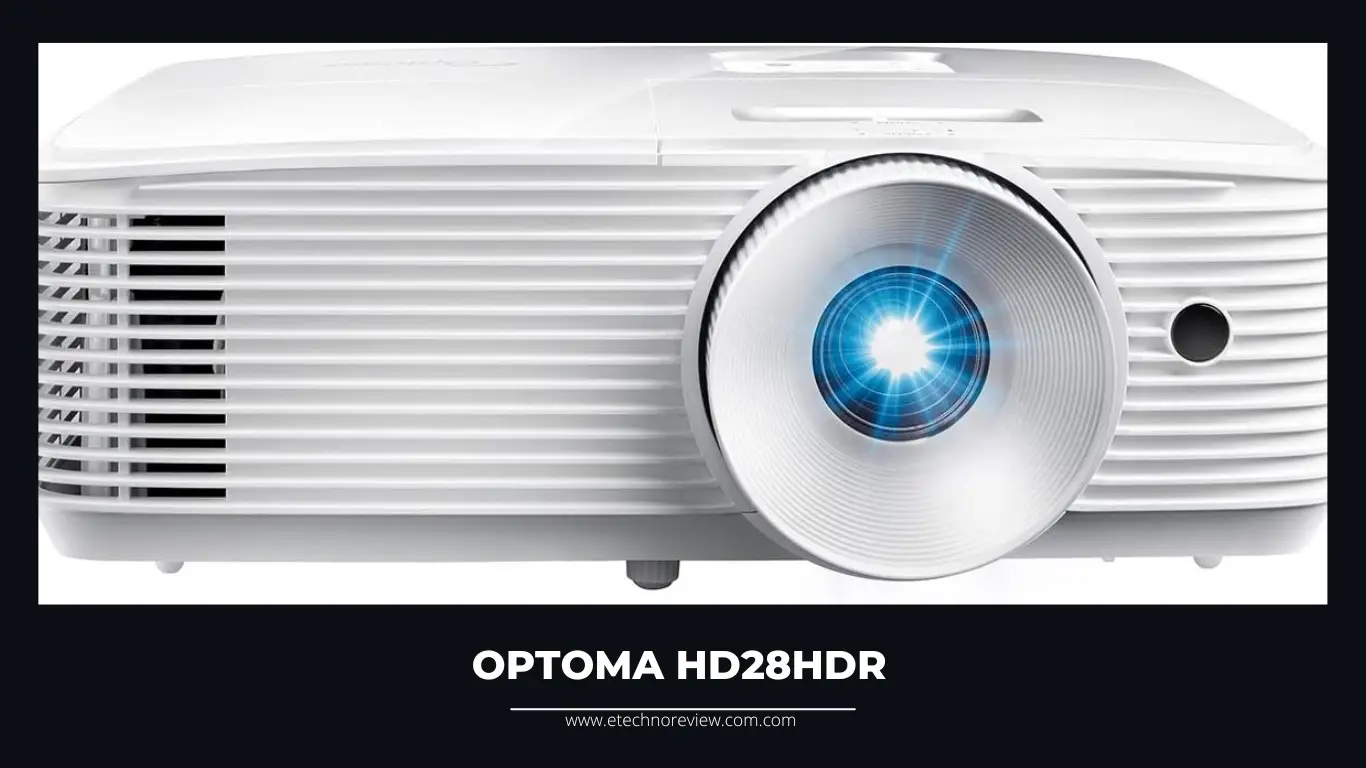
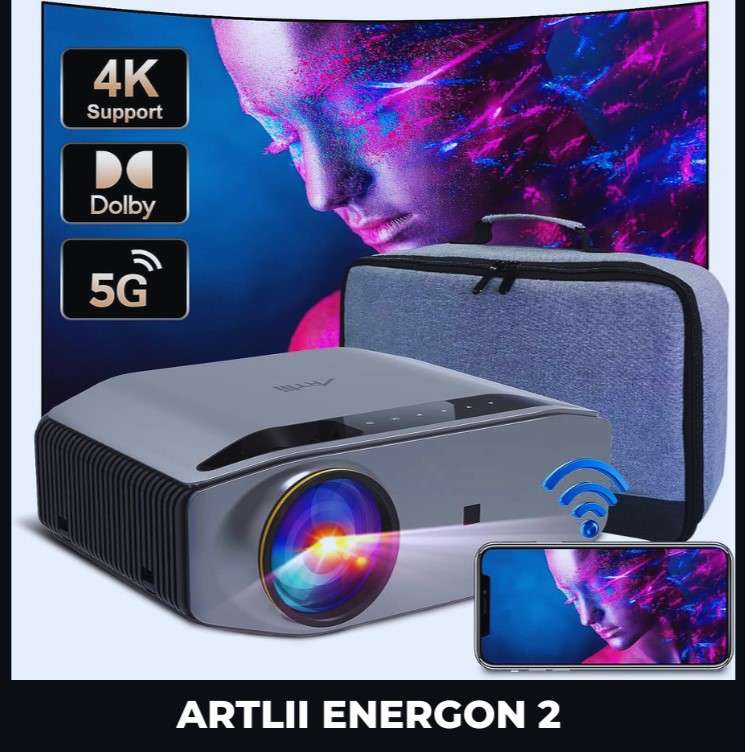
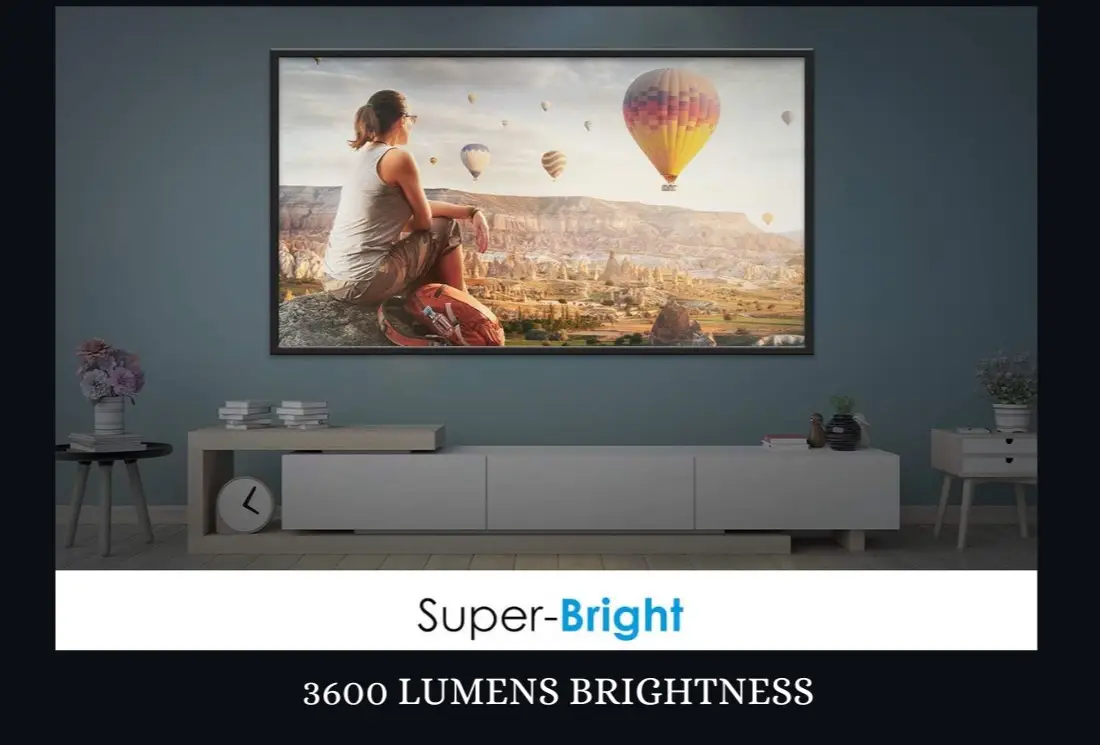
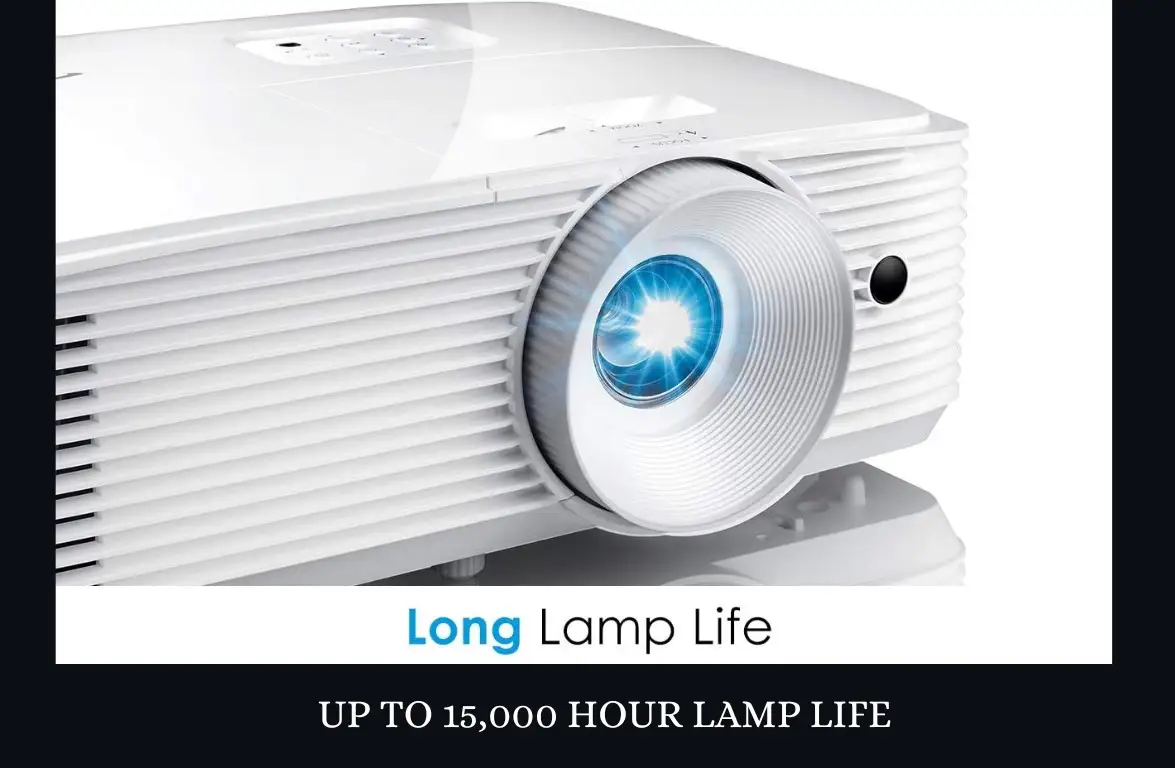
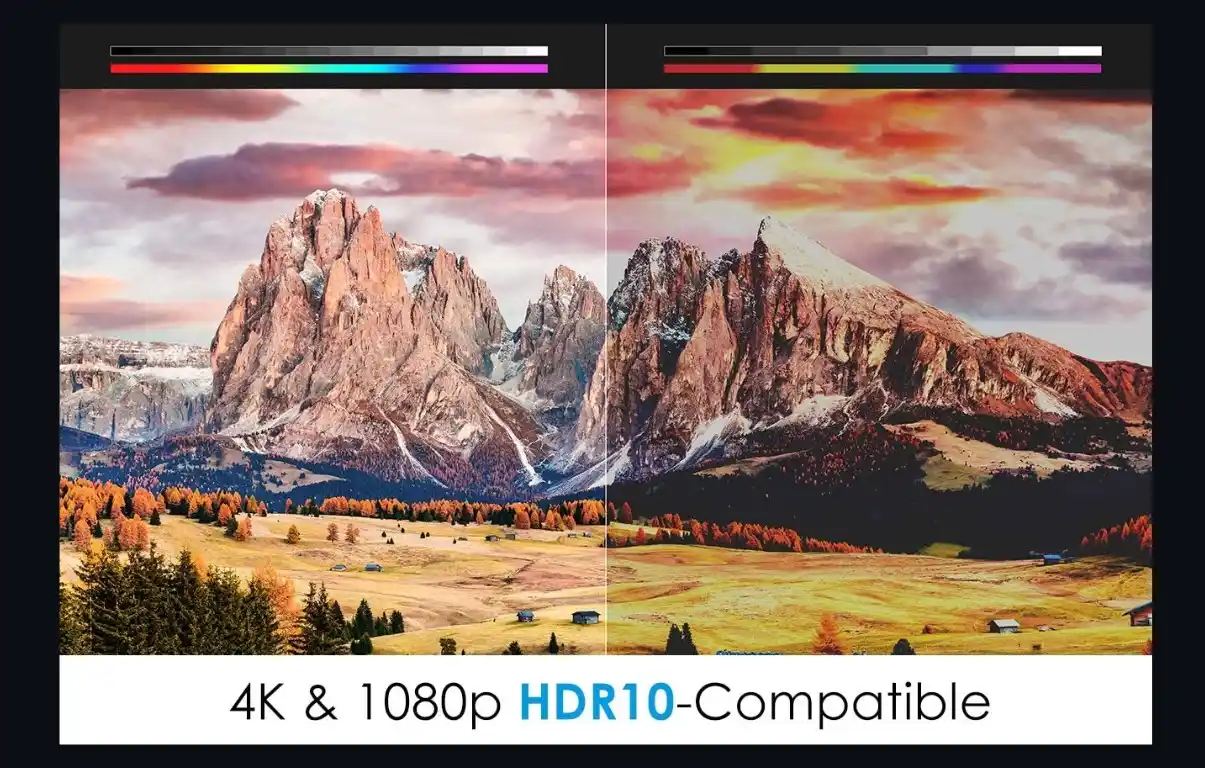
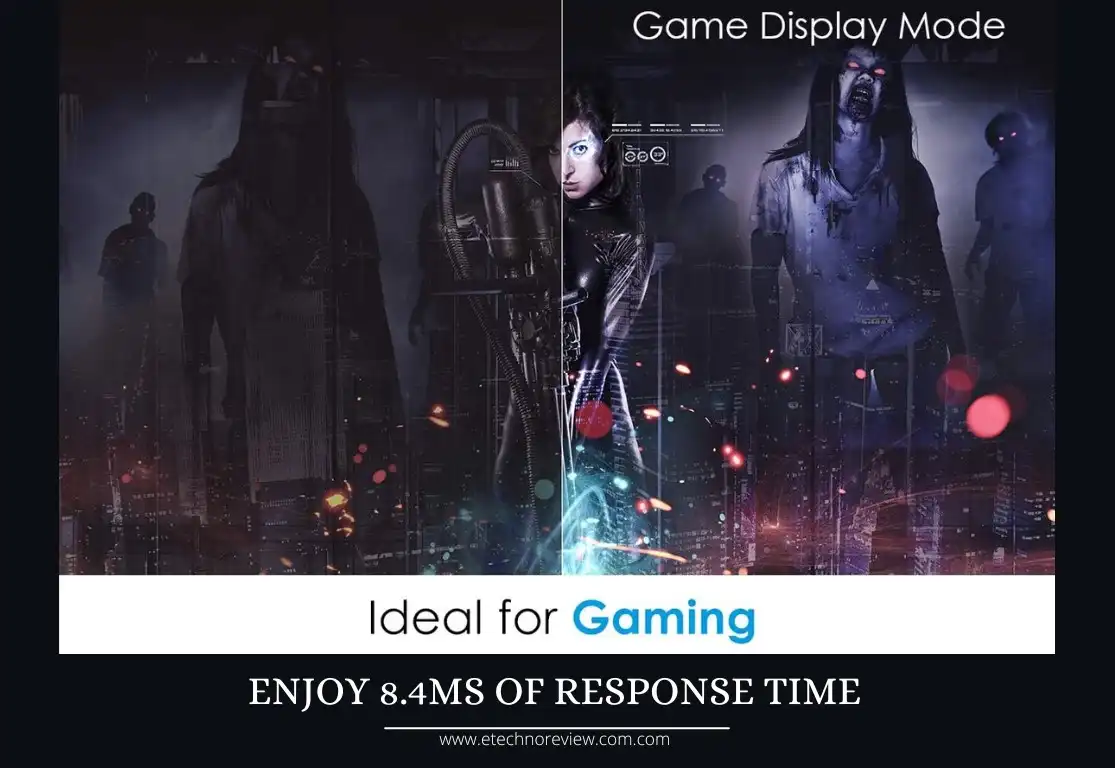
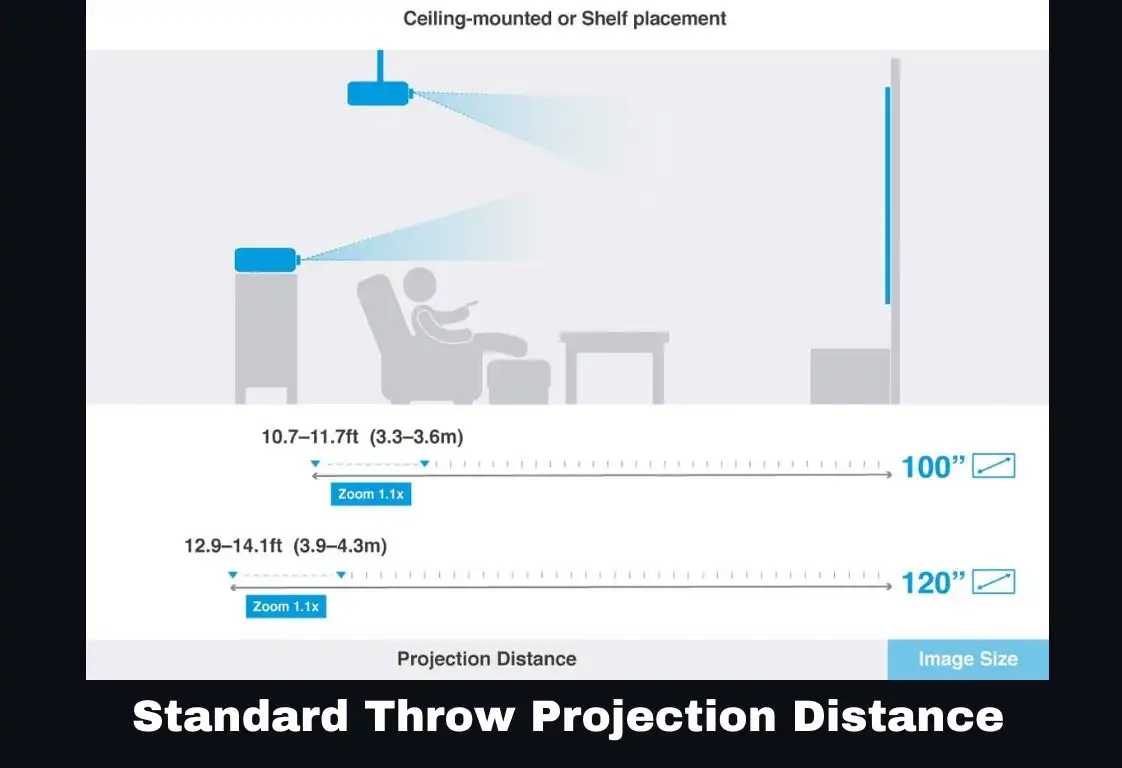
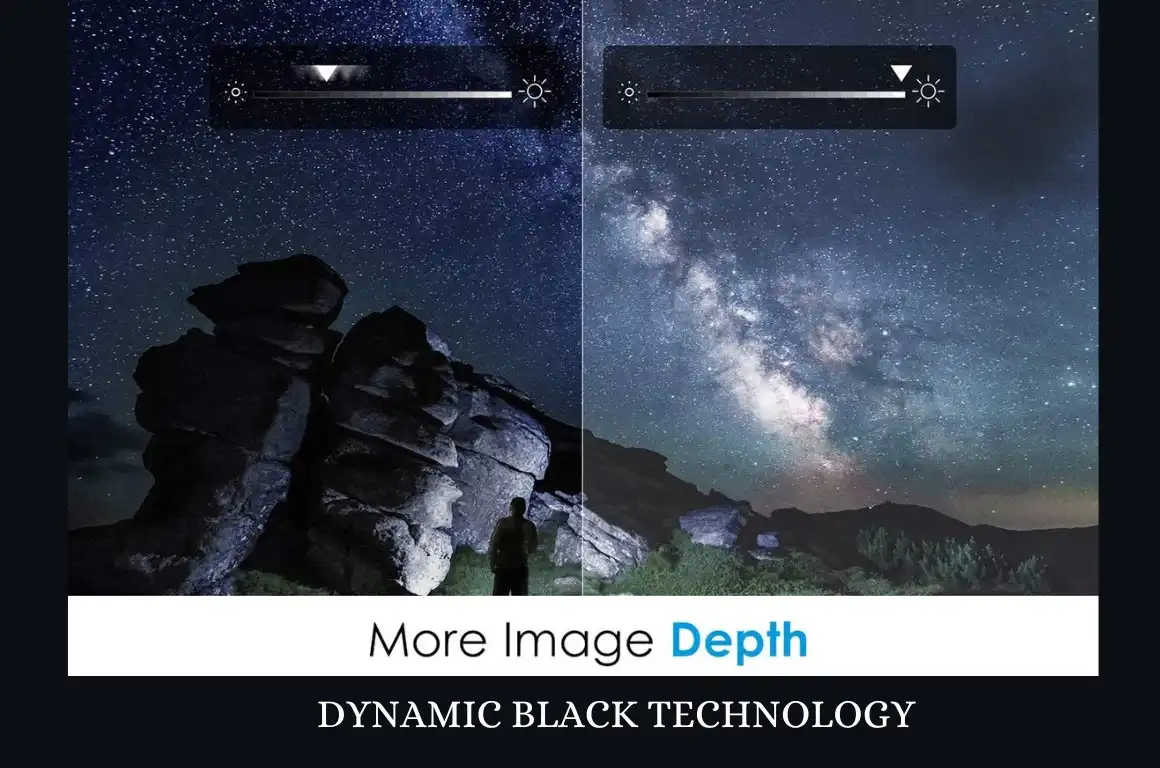
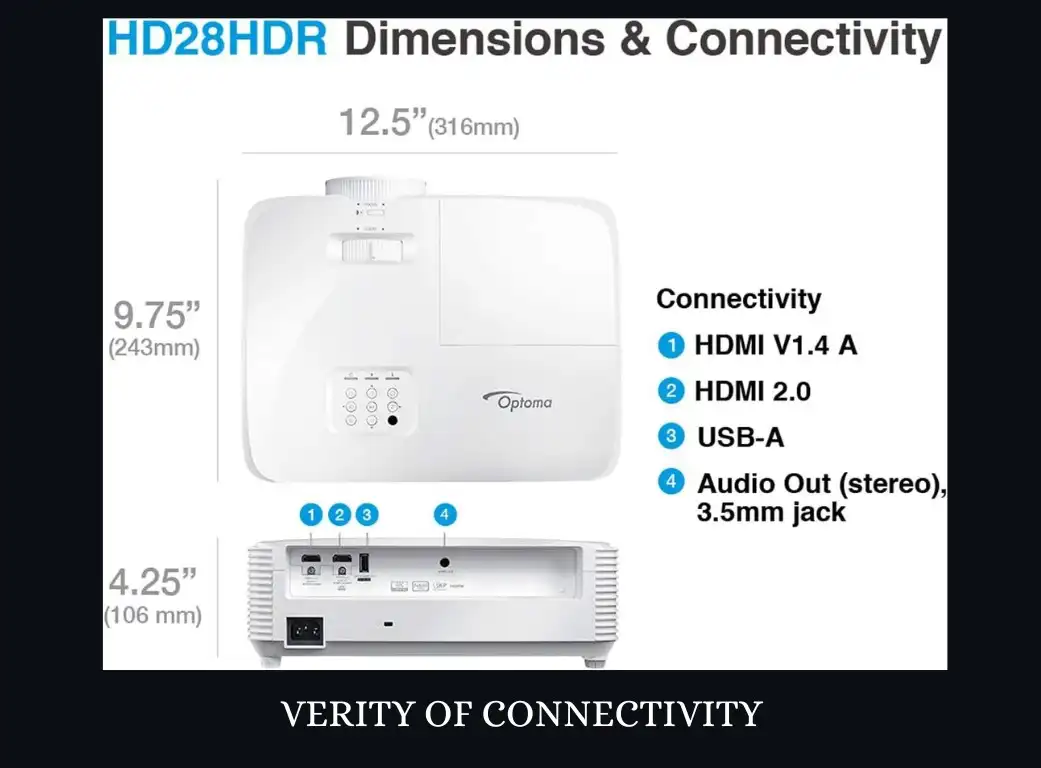


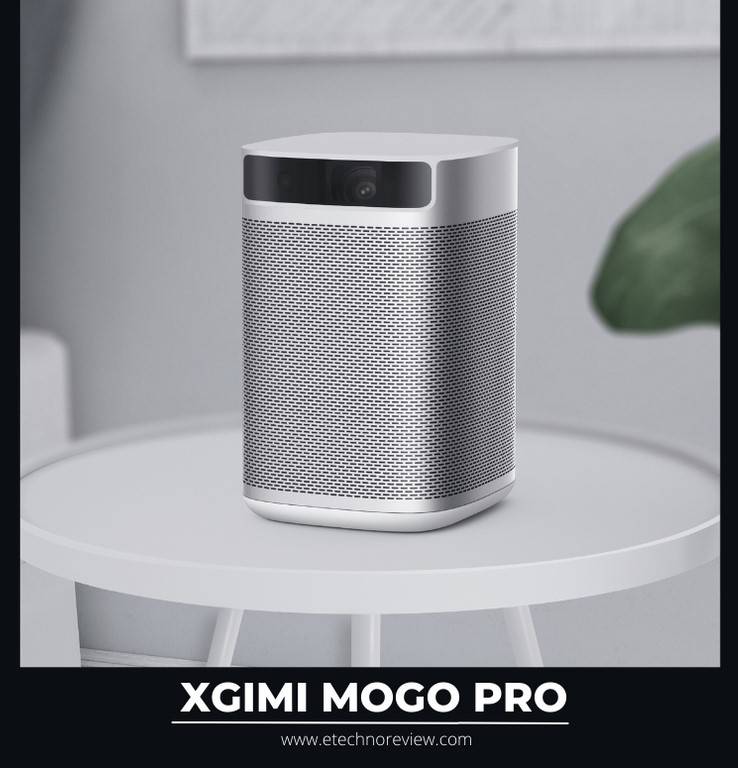
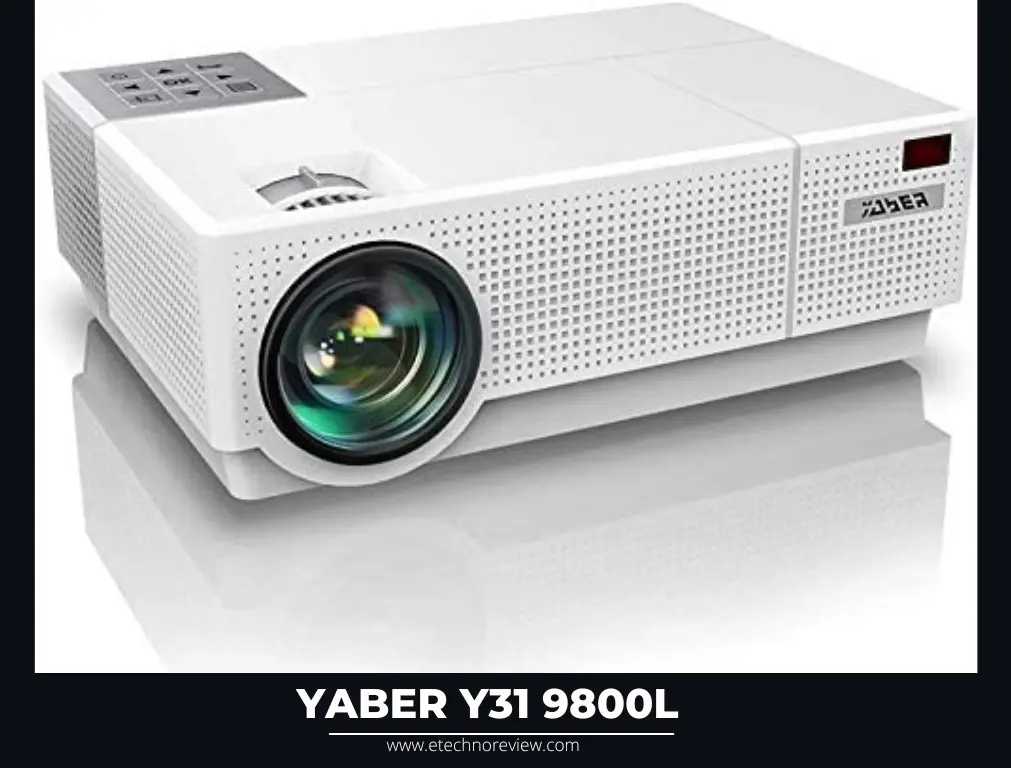
Leave a Reply